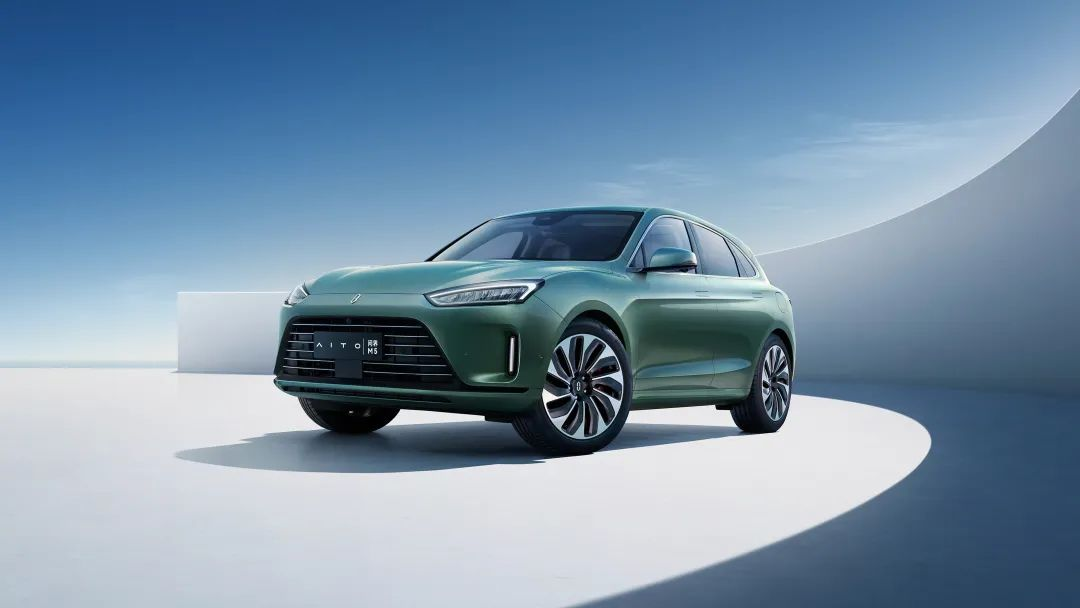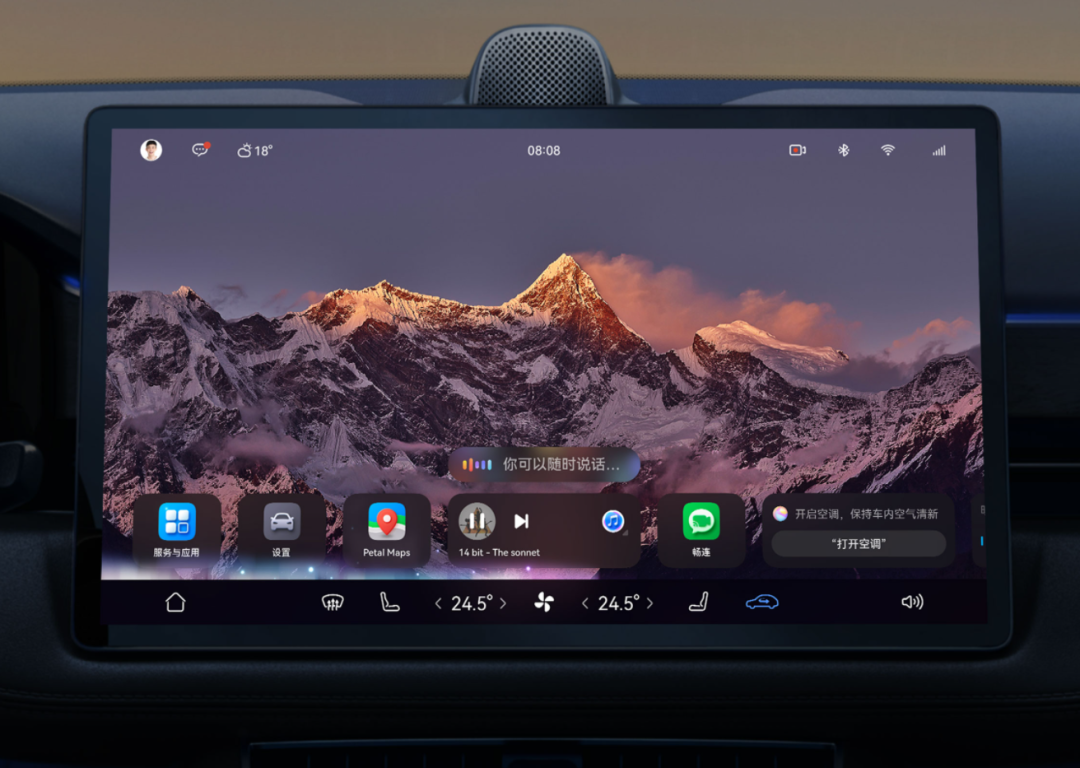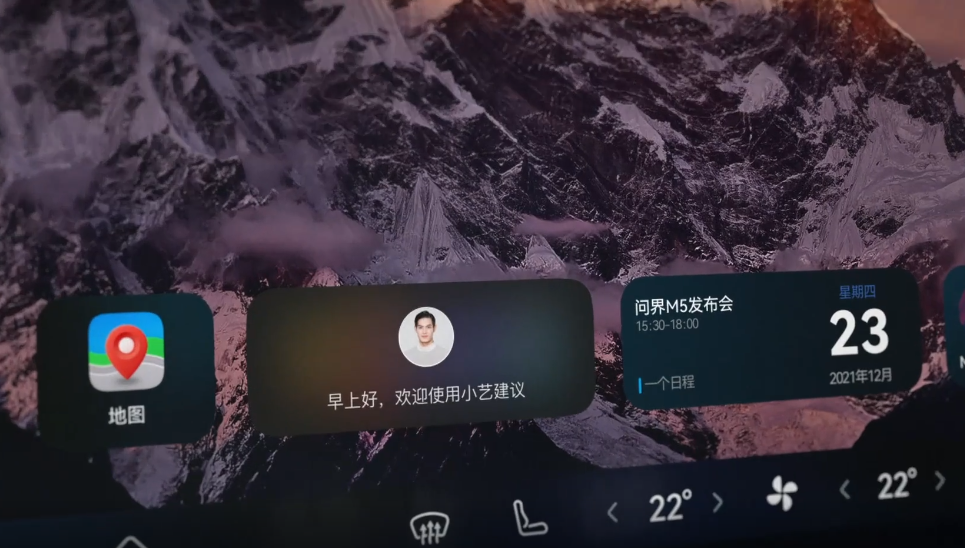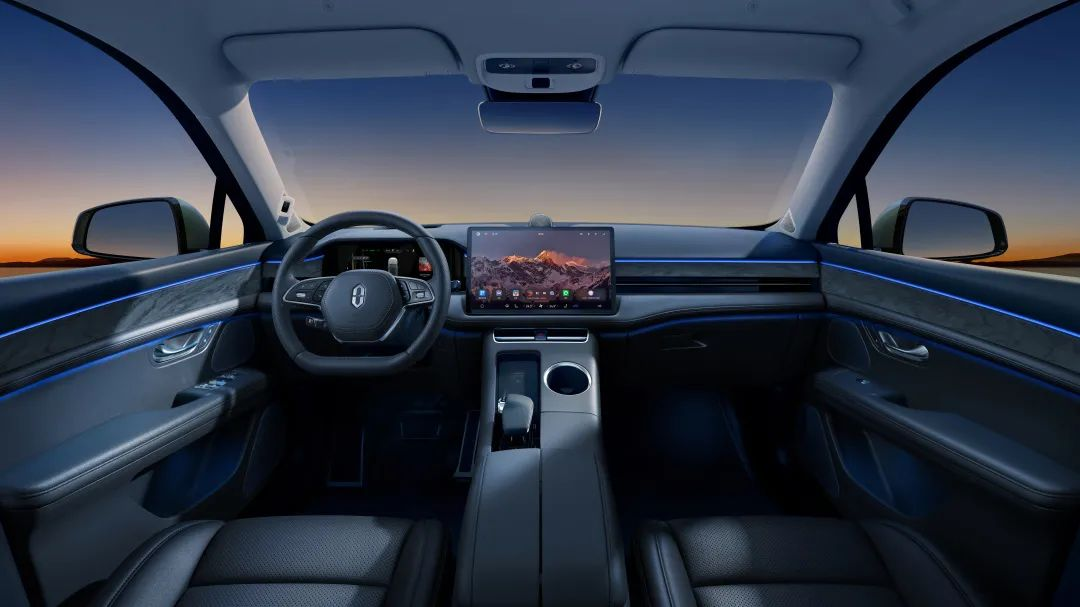Author: Michelin
Since Tesla introduced the large screen inside the car, this sentence has been used to satirize all kinds of central control screens.
However, although the central control screen is getting larger and larger, it is still rare to achieve the smooth experience of a tablet computer; similarly, if you really bring a tablet computer into the car and cannot communicate with the car control, you can only use it as a decoration.
Therefore, when my colleague @GeekCar Xiaopangzi told me “The central control of this car is too much like an iPad”, I didn’t react for a while whether this was a compliment or not?
The central control screen that Xiaopangzi referred to as “too much like an iPad” comes from the AITO AITO M5, which is equipped with the HarmonyOS smart cabin. After the release of the AITO AITO M5, which has a “Huawei content explosion” smart cabin, we came to experience this “central control screen that we have experienced with an iPad” for the first time.

Why do we say this is a central control screen that we have experienced with an iPad?
The central control screen of the AITO M5 is 15.6 inches, with a narrow edge design of 90% screen-to-body ratio. In terms of size and shape, the AITO M5’s central control screen is similar to the Tesla Model 3 (15 inches) and the XPeng P7 (14.96 inches).
However, unlike the navigation and desktop or card-style layout of the first two, the AITO M5’s desktop looks more “open” and adopts a layout similar to that of a tablet, with wallpaper + dock bar layout, and fixed home pages, air conditioning and other functions at the bottom dock bar.
To simplify the interaction and make common operations more concise, M5 has set up a movable and customizable Smart Dock bar at the bottom of the screen. Click the “Services and Applications” button to enter the application center and see all the tab options. Similar to a smartphone, you can long-press the function button to drag and drop the icon to add it to the desktop Smart Dock bar. Similarly, you can add the floating window of the service center to the desktop. This experience is not just an ordinary tablet but the experience of the Harmony OS tablet.

At the same time, pull down the desktop to enter the control center. On the left are the commonly used car control buttons such as driving mode, charging port, and fuel port control. On the right, you can set up the car-home interconnection scene through the app. Click on the air conditioning icon in the center of the dock bar to enter the air conditioning control area. You can use a Tesla-like single-point drag and drop mode to adjust the temperature and wind direction.


This set of operation logic and UI design has almost zero learning cost for people who are used to using smartphones, tablets, especially those who use Hongmeng OS.
Moreover, during the operation process, there is no lag or image edge delay when switching between split screen mode and 2D/3D mode, and the fluency is like operating a tablet computer.
If we use the “Intelligent Cockpit Intelligence Bureau” to test it, how many points can this cockpit get?
The imagination of Hongmeng interconnecting everything has brought the interconnection of intelligent software and hardware to an unprecedented level, and naturally we have higher expectations for this cockpit. On the day when AITO VISION M5 was released, the GeekCar colleagues who were watching the live broadcast in the office were rubbing their hands: If we use our evaluation system to test it, how many points can this Hongmeng cockpit get?
Unfortunately, the test drive of AITO VISION M5 will not be available until after January 20th, and the engineering vehicles in the exhibition hall do not allow us to evaluate it in detail for two or three days according to the standards of the “Intelligent Cockpit Intelligence Bureau” on fixed routes. However, this does not prevent us from considering the completeness of this cockpit from the perspective of the evaluation framework, such as: functionality, interaction ability, scene space, interconnection ability…
In terms of map navigation, AITO VISION M5 uses Huawei’s own Petal Maps, which provides capabilities such as super GNSS, intelligent inertial navigation positioning technology, Hongmeng circulation, and also provides LBS services, providing life services based on the current location, route planning, gas stations, charging stations, and consumption scene recommendations.
After turning on the navigation, you can either display the navigation in full screen or use split screen mode to open other applications at the same time; for familiar routes, you can also keep only a small navigation floating window to guide the route in the upper left corner of the screen.
One interesting feature of Petal Maps is its seamless integration between mobile and car displays, which differs from other car navigation systems that only support information sharing on smartphones or car displays. Currently, Petal Maps is not yet available on domestic app stores and does not support mobile devices. However, with Petal Maps, users who use mobile phones with HarmonyOS can obtain location information from third-party apps such as WeChat, Meituan, Dianping, Baidu, and Gaode. With “One-Touch Transfer,” they can send the information directly to the car display and start navigation in Petal Maps, eliminating the need to open third-party apps or share locations after switching to map interfaces. Moreover, when the mobile phone and car display are logged into the same Huawei account, users can use the phone for navigation, and the car display will recognize and take over the navigation task. After leaving the car, the navigation task can be automatically transferred to the mobile phone.
This automatic relay navigation mode is indeed a boon for those who frequently switch between mobile and car navigation.
In terms of voice interaction, the QJ7008 model uses one of Huawei’s intelligent voice assistants called Xiaoyi, which is a smart assistant built into HarmonyOS. Huawei did not give Xiaoyi a personalized IP image, but rather presented it as a card that users can drag and drop to adjust its position on the Smart Dock.
Xiaoyi has basic voice capabilities such as 60-second continuous conversation, interaction in four tonal regions, interjection at any time, and support for multiple dialects. It also supports the “visible command” feature at the car-control level and can silence the rear-seat microphone in case of backseat noise.
 “`
“`

In the previous tests conducted by Intelligence Bureau, it is found that most of the voice interactions in cars can open third-party apps, while voice control and SEE & SAY features within the third-party ecosystem require individual customizations, thus challenging the customization capabilities of HarmonyOS.
Of course, for the response rate and accuracy of voice interaction in multiple scenarios, it still needs feedback through AITO M5 test drive.
At Huawei Developer Conference 2021 two months ago, LIZHI Podcast shared the “hardships” of third-party app development for cars: the biggest pain point in the development of car apps is that different car manufacturers have different central control systems, which require customized adaptation, and the workload for adaptation accounts for 2/3 of the total workload. This makes the “multiple” and “precision” of third-party ecosystems in cars a difficult problem for many car companies. However, with the support of HarmonyOS, which has a huge hardware base and can adapt to multiple brands at once, it naturally has ecosystem advantages.
In the previous Smart Cabin Intelligence Bureau, my colleague @GeekCar Mr. Yu compared NIO’s “customization-required ecosystem” to a carefully crafted and simple bar: a variety of base alcohols are carefully blended to provide stable services and products. If we use this metaphor, the cabin ecosystem of AITO M5 is more like a premium supermarket with a membership system, which provides a rich and stable ecosystem supported by HarmonyOS’s huge software and hardware. Here, there are not only Huawei’s own ecosystem resources, but also deeply customized third-party ecosystems.

In terms of audio, Huawei Music is more like a self-operated audio collection: music, online radio, audiobooks, etc. are integrated in Huawei Music, providing 5.1 channel, 7.1 channel music, allowing the capabilities of HUAWEI Sound audio system in the cabin to be fully utilized. In addition to the built-in Huawei Music, customized third-party apps such as Kugou Music, Ximalaya, etc. can also be downloaded from the app market.
“`
Regarding video, there are the self-owned Huawei Video with 5.1-channel high-quality sound experience, as well as Bilibili, Youku Video, and so on.
For life services, there is UnionPay Cloud QuickPass, Pocket Story, and so on.
These ecosystems collaborate with innovative hardware to create different scenarios. The AITO M5 does not have too many scene modes for the cabin, but rest and music are centered around high-frequency usage scenarios.
For example, when the nap mode is activated with one click, the driver’s seat will be reclined, the air conditioning temperature and wind speed will be adjusted, and the central control screen will enter the “natural” interface countdown. At the same time, the headrest speakers will play white noise or soothing music to relax.
For example, when playing music with the theater mode activated, the HUAWEI SOUND in-car audio system will create a surround stereo theater-level effect in conjunction with the music.
After considering the four dimensions of functionality, interaction, space, and connectivity, what impressed me most about the WENJIE M5 is: this is a cockpit full of Huawei elements, and we can easily see the Huawei elements.
The cockpit is equipped with DMS and OMS cameras. One is used for FACE ID and fatigue monitoring; the other provides social attributes, and can display the entire car interior during video calls. The camera in the cockpit and user privacy has been a sensitive topic. The OMS above the rearview mirror can be covered by the hand-dialing board to block the camera, similar to the makeup mirror on the sun visor.
This approach to addressing camera privacy issues was also seen in Huawei’s previous matebook laptops: the camera on the previous generation matebook was hidden in the keyboard, and it would pop up when needed, avoiding privacy issues.
To be honest, for everyone’s increasing concern about privacy in the car, a slightly retro physical switch like this may bring more security.Another moment reminds us that the cabin features a “Huawei-designed” fast charger. The front row of the cabin is equipped with a USB port and two Type-C ports, supporting 60W wired ultra-fast charging. Meanwhile, the wireless charging pad at the center console supports 40W wireless charging. Even the back row has two Type-C plugs that support fast charging. The fast chargers throughout the cabin seem to constantly remind us of our proficiency in fast charging.
However, for my colleagues who need to spend long periods of time testing in the car, charging their phones, laptops, camera batteries… the fast chargers in the cabin are definitely not too many.
Finally
From the AITO Interact M5 press conference on the 23rd, the biggest impression we got was that this HarmonyOS smart cabin is more like a digital product, an IoT product, rather than just a car.
There is a design in the cabin that confirms this point: in the AITO Interact M5, AIoT functionality is located on the right side of the dropdown menu, on par with the car control function and of equal importance. For the AITO Interact M5, AIoT is not a form-over-substance feature in the cabin, but rather a value inherent in the existence of an intelligent car.
One of the biggest implications of the AITO Interact M5 launch is that it helps Huawei complete the most important puzzle piece in the Hongmeng ecosystem, beyond smartphones, wearables, and smart homes. While the Hongmeng system empowers cars, cars, like other smart products, serve the Hongmeng ecosystem.












